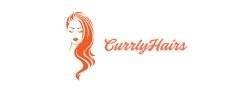Ingrown hairs are also commonly known as shave bumps. This hair is painful and itchy. It commonly appears on the smile, legs, underarms, and pubic area. The skin bumps may become painful and tender. Recurrent shaving or waxing causes small, red, and at times sore bumps, mostly in areas that are routinely shaved or waxed, such as the face, legs, or bikini line, and underarms. Ingrown hair occurs when a hair grows into the skin by choice of growing out of it. Ingrown hairs can cause tingle, irritation, and even infections if not properly treated, as the natural curl can cause the hair to grow back into the skin. They are more regular in people with curly hair. Stopping ingrown hair involves proper hair removal steps, exfoliation, and moisturizing the skin to routinely keep the hair gland clear.

What are the effects of Ingrown Hair?
An ingrown hair, also known as ingrown hair. Ingrown hairs regularly grow following shaving. Black people the ingrown hair commonly affected. Ingrown hairs can lead to pain and tenderness and sometimes cause more effects skin problems. Step by step, symptoms include redness, swelling, itch, and the development of small, painful bumps that may look like pimples. In some cases, the enforced area can become infected, major to purulent or cystic lesions. Duplicate ingrown hairs may cause a shade of the skin and spoil, especially if the bumps are collected at or unsuited treated. For being with curly or rough hair, these effects can be more drastic and stable. Proper care and safety measures are vital to keep away from these issues.

Affects Ingrown Hair on my body:
Ingrown hairs can affect various parts of the body in different ways, depending on where they take root. Ingrown hairs commonly occur in areas like as the underarms, pubic region, face, and legs. They can also take root on different parts of the body, the inside of the nose, the abdominal region, the back, the chest, the eyebrows, and the glutes. On your face and neck, they can result in tiny, painful pimples, redness, and discomfort, usually after shaving. On the legs, underarms, or bikini area, they can lead to itching, inflammation, and dark marks if not treated properly.
Symptoms and Causes:
Are there symptoms of Ingrown Hair?
Symptoms and signs of Ingrown Hair:
1) Skin irritation
2) Pain
3) Itching
4) Burning or stinging
5) Decolouration (red, purple, and brown)
6) Small bumps that are full of pus
7) Hyperpigmentation
8) The loop is hair-shaped because the top of the hair curves into the skin

Causes of Ingrown Hair:
This generally occurs after shaving, plucking, or threading. Ingrown hairs are also known as ingrown beard hairs. While the term is usually used for ingrown hairs of the facial hair area, it can refer to any part of the skin in which trimming or tweezing has generated an ingrown hair. Because the hair of the facial area and the pelvic region tends to be rough, these regions are especially susceptible to the formation of ingrown hair.
1) Tweezing
2) Your paring ways are indecorous, a major cause of ingrown hair
3) The main cause of ingrown hair is cutting hair close
Diagnosis:
Ingrown hair is simple to identify, so you don’t need a healthcare professional to diagnose it. Still, your healthcare provider can confirm them during a physical exam. They will examine your symptoms and ask you questions about your ingrown hair.
1) First, you observe a symptom on your body
2) How do you arrange your skin before you cut your hair?
3) How do you shave again?
4) How do you wax and tweeze?
Treatment:
How do you treat your Ingrown Hair?
If your ingrown hair is annoying you and gets infected, your doctor creates a small cut with a needle and a surgical knife to release it.
1) A steroid that you put on your skin to comfort the edema and rash.
2) Antibiotics that you take by mouth or apply to your skin to heal inflammation.
3) You can use an electric shaver.

The treatment of hair uses medication.
Your healthcare supplier’s prescriptions can reduce irritation and heal infections or ingrown hairs.
Antibiotic cream or tablets.
Steroid tablets or creams help decrease the infections.
Prescriptions that help clear dead skin cells.
Antibiotic creams to relax your skin.
Electrolysis: This method uses a small needle and a light electric shock to destroy hair follicles one by one.
Laser hair removal: This method uses lasers to destroy cells that contain a high concentration of pigment.
What will happen if hair goes untreated?
In most cases, ingrown hairs usually heal themselves within one to two weeks with only minor irritation, as they eventually release from your skin as they grow longer. Infections can develop around causing pus formation, discoloration, and pain, though. If you see signs of infection, you should visit your healthcare provider.
Prevention:
Ingrown hairs can be tough to prevent in some individuals. Still, it is essential to note that incorrect shaving methods and skin care customs can also contribute.
How can you prevent hair?
1) Any area of the body needs to be wet with hot water before shaving.
2) Use a razor gel on your hair.
3) Use cold water to wash your skin after pairing.
4) Use a one-edge shaver.
5) Don’t shave nearly to your skin.
6) Cleanse the razor with water after every stroke.
7)If you’re using an electric shaver, grip it lightly over the surface of your skin.
Takeaways:
Ingrown hairs are easy to stop and heal.
Ingrown hair can affect anyone.

When to Consult a Clinical Care Doctor.
Consult a clinical care doctor if ingrown hairs recur and cannot be managed with at-home remedies. In some instances, you may be referred to a skin healthcare professional, called a dermatologist, for management. Although most ingrown hairs don’t need immediate medical attention, consult a healthcare professional immediately if you develop symptoms of a critical skin inflammation, including:
- High temperature and/or tremors or chills
- Gloomy or creamy release from the body
- A filthy smell
- Tenderness with warmth to the press
- Growing irritation, lump, ache, and heat in the area
- Spreading rashes or scarlet streaks from the injury
I ask my healthcare provider questions.
- How can you say that about ingrown hair?
- What home procedures do you suggest?
- Is there a cream or salve that you can recommend for me?
- What freely available medicines do you advise?
A note from Cleveland Clinic
Ingrown hairs are a common skin condition. They may appear anywhere hair grows on your body, but they commonly appear in places where you shave, tweeze, or wax, especially your face, legs, armpits, and pubic area. A good skin care routine helps prevent ingrown hairs from forming, while at-home treatments can help release the hair from underneath your skin and provide relief. Contact your healthcare provider if you notice any signs of infection.

A message from the Clinic.
Ingrown hairs are a common skin disorder. They usually occur in places where you shave, specifically your face, legs, underarms, and pelvic region. A proper skin care regimen helps stop hair from developing, while home regimens can help release the hair from beneath your skin and provide comfort. Link your healthcare supplier if you see any signs of inflammation.




